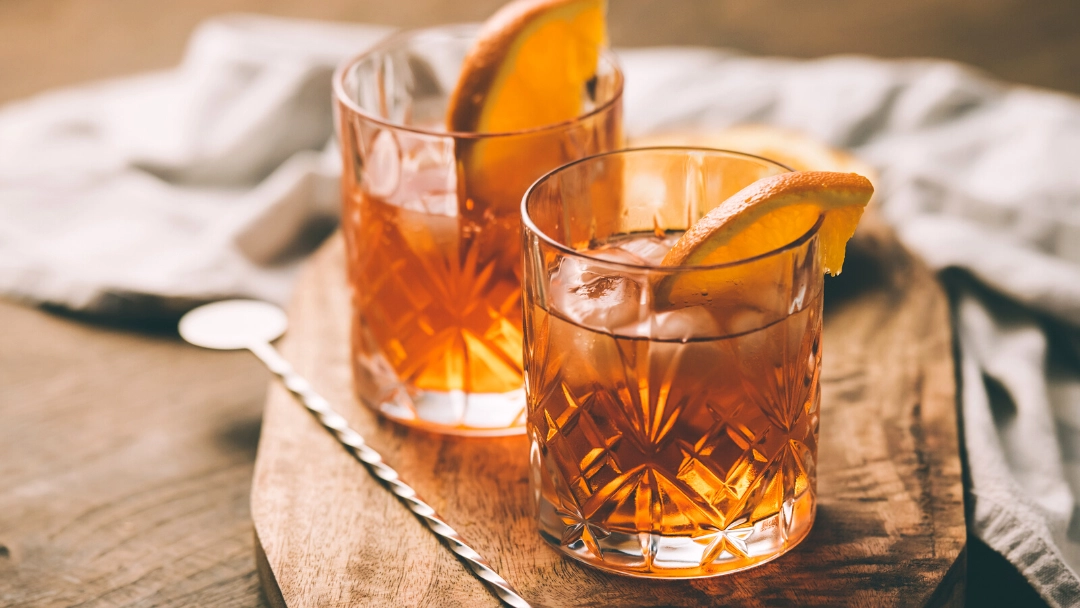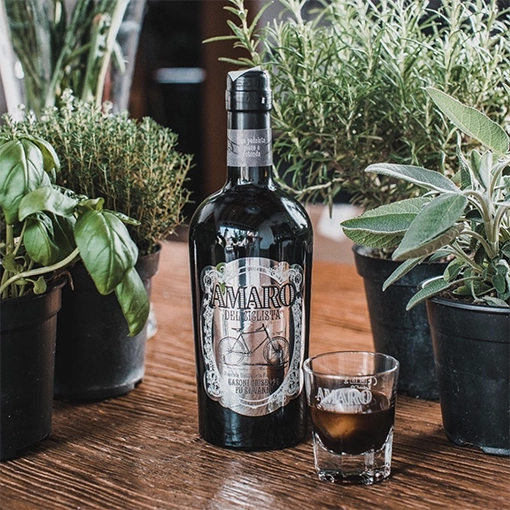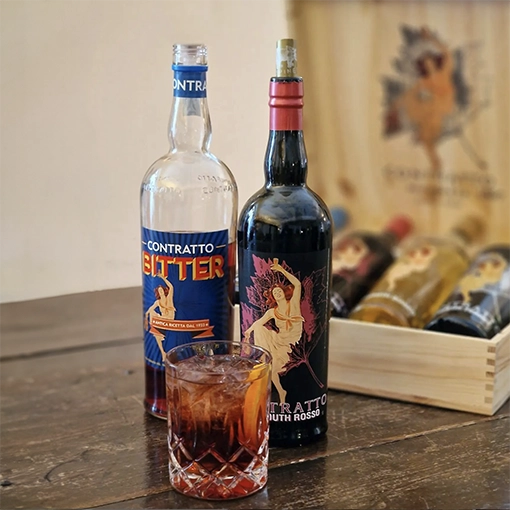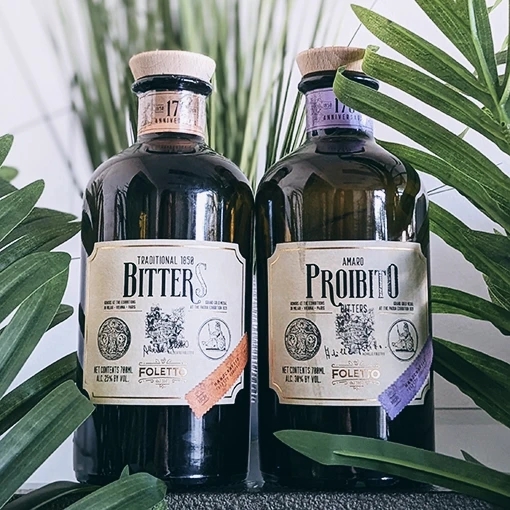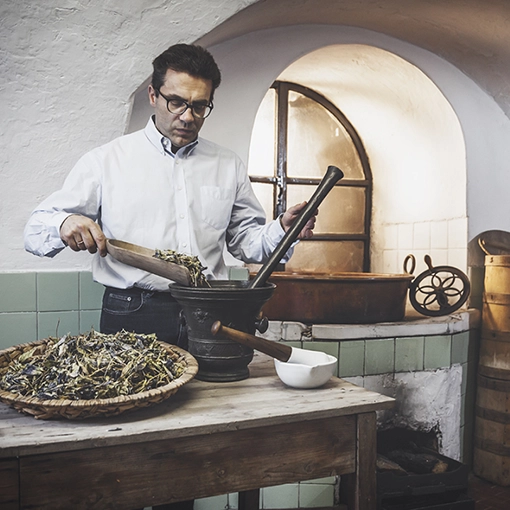If you’ve ever found yourself overwhelmed by the amaro section on a cocktail menu, you’re not alone. As romantic as the category sounds, it is equally beguiling— the versatility and range of this sometimes before-dinner drink, sometimes after-dinner digestif, and sometimes cocktail ingredient has been known to stump even the most seasoned beverage professional. So let’s break it down. In this article, we’ll cover Amari basics before exploring two award-winning bottles that belong in every bar (including the one you keep at home).
What is Amaro?
Simply defined, Amaro is a distinctly bitter herbal liqueur. For today’s purposes we’re discussing spirit Amari, which begin with a neutral spirit base before being infused and/ or sweetened with a variety of botanicals, fruits, roots and more. They typically have an ABV of 16 to 40 percent and fall into a broader beverage category called potable bitters (translation: drinkable bitters). These are beverages that can be enjoyed on their own, sipped neat or mixed into cocktails. At the other end of the bitters spectrum, and distinct from Amaro, you’ll find non-potable bitters. These are concentrated, sold in tiny tincture bottles, and are not intended for sole consumption. Highly extracted flavors make them ideal for seasoning cocktails with just a few dashes.
A Brief History
As is the case with most spirits, it’s impossible to pin down exactly when and how Amari was born. Its origin is most commonly associated with herbalists and monasteries across Europe, spurred by technological advances in distilling in the 19th century. What probably began as a method for monks to preserve herbs (combining plants with distillate) would later become the blueprint for Amari. It’s initial uses were medicinal— macerating spices, herbs and tree bark in alcohol were found to have healing properties, specifically when it came to digestion. These early infusions were popular in Italy, where Amari has unmistakable historical ties and where it was commonly sold as a health tonic in pharmacies.
Throughout the 1800’s, families and monastic communities would perfect their own Amari recipes and pass them down to future generations. These were limited in production and highly localized, focusing on distinct pockets of land. In the 20th century, appreciation for Amari and commercial growth gained momentum side by side. Globalization meant that it could be enjoyed worldwide, social practices like Aperitivo hour brought people together over Amari on a daily basis, and the timely rise of bitters in essential cocktails (like the Negroni) turned it into a bar staple. In 2024, you’d be hard-pressed to find a bar program in the U.S. that doesn’t have an Amaro in some form or another.
Today, Amaro varies widely in style, flavor and color. It can be intense or gentle, biting or soft, licorice black or London red. A majority of them are brown, ranging in hue from amber to dark earth. Some are pleasantly bittersweet while others, well, belong in Slytherin. There is no universal standard for an alcohol minimum or maximum, and the same goes for the number of botanicals permitted in any given blend. Its safe to say that the lack of regulation in Amari gives rise to discovery. Here are two bottles that not only set the bar for beverage excellence, but truly capture the tradition of this bitter herbal liqueur.
Essential Amari: Foletto
Meet Foletto, a group of 5th generation apothecary pharmacists in the tiny Ledro region of Trentino. Founder Giovanni Foletto moved to the Ledro Valley in 1855 to work in a pharmacy and laboratory producing mineral water. He took over in 1856, setting the course for the Foletto family’s destiny. Generation after generation became known for specializing in categorizing botanicals and developing herbal medicines from Garda and the Alps. In the 1890’s, they converted their license to include the production of syrups and liqueurs. Spanning 170 years, the Foletto heritage portfolio is an homage to original house formulas and passion projects from each of Giovanni’s descendants.
Foletto Bitters 1850 (Double Gold Winner at the TAG Global Spirits Awards) & Amaro Proibito (Best in Show & Double Gold Winner at the TAG Global Spirits Awards)
Foletto Amaro Proibito
The recipe for Amaro Proibito dates back to 1943 when Achille Foletto (Giovanni’s grandson) was working as a lieutenant in a military hospital. At a time of occupation and political uncertainty, he was determined to create a refined bitter elixir that would bring his patients hope. Achille harvested plants and fruits from around the family property, with angelica, chamomile and gentian among them. After a nine month combined maceration and percolation process, Proibito was finished with a small amount of brown sugar. He served it to soldiers in hospital basements, who savored its sweet balsamic and orange creamsicle notes in secret. Thankfully, what started out as a delicious act of resistance is now shared widely. Enjoyed in the light of day, Proibito is a delicate expression of Garda citrus, mountain florals and Dolomite herbs. Try it as a digestif for the perfect finish to a meal or even prohibition style— poured in a dimly lit bar amongst friends, up with a twist.
Foletto Bitters 1850
Another offering from Foletto takes us even further back in history to 1850. But to get there, we have to move forward first. Achille was succeeded by his son Alberto, who took over as a 4th generation pharmacist with his two sisters. In a happy accident, Alberto found the dated recipe for this amaro tucked away in a dusty drawer while moving furniture. With some careful tweaking he was was able to breath new life into the formula, lightly adjusting the ingredients and extending the maceration time (6 months did the trick). 1850 is made artisanal style, in small batches, with 26 botanicals. It emphasizes the local bark of the Trentino larch tree, alongside enveloping notes of citrus, cacao and green almond. In the wide world of Amari, Foletto Bitters 1850 stands out as a rare splash of history, reminding us that what was once lost can be found again. Enjoy it on its own or simply add soda for a refreshing spritz.
Whether you’re a seasoned enthusiast or a newcomer to the world of bitter liqueurs, Amari is a category that promises endless exploration. From that warm-your-bones shot of fernet in the wintertime to neon orange spritzes at brunch, the possibilities are limitless. And if you’re still confused, remember that Amari used to be considered medicine. It might just be the tonic to cure what ails ya…

